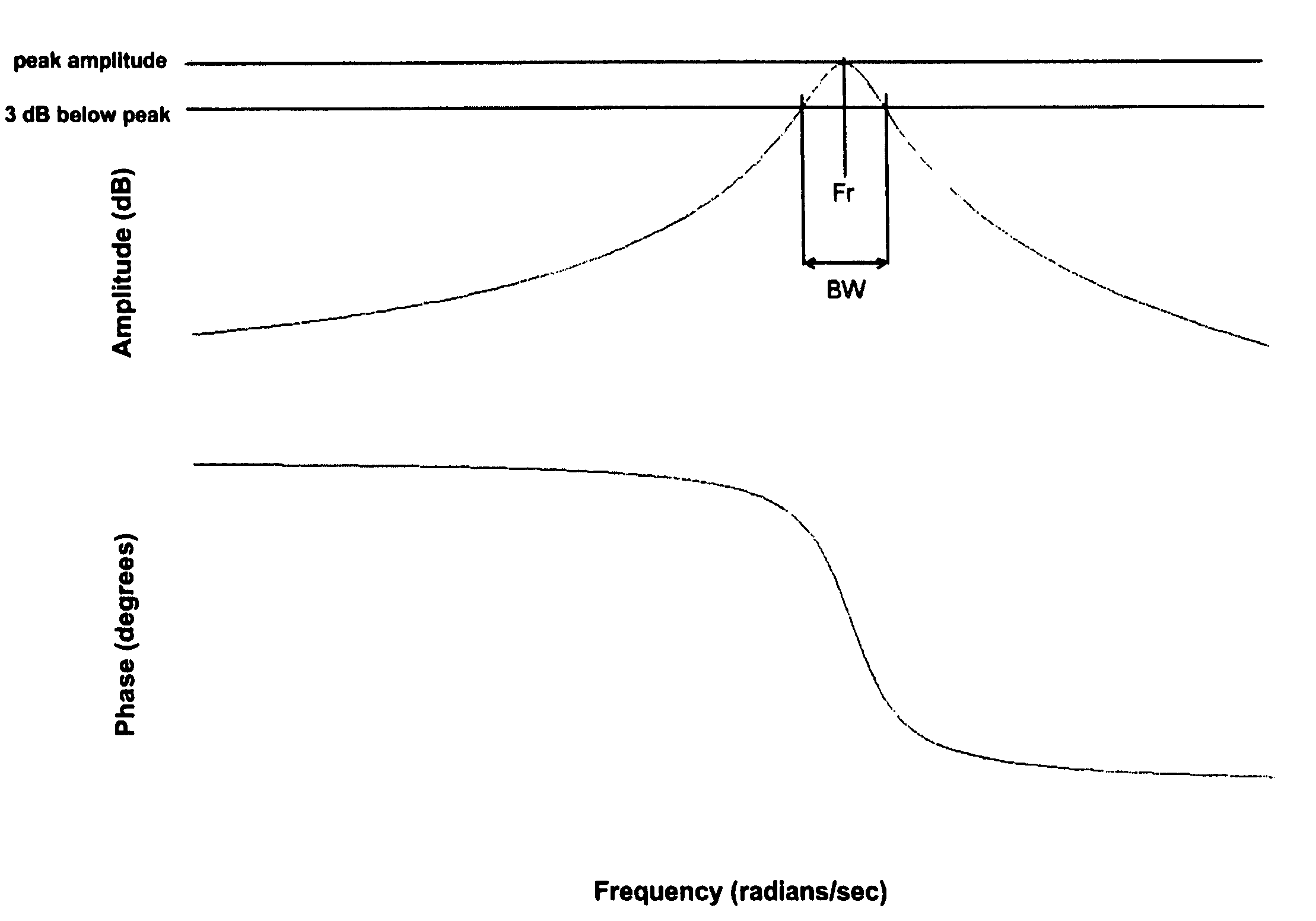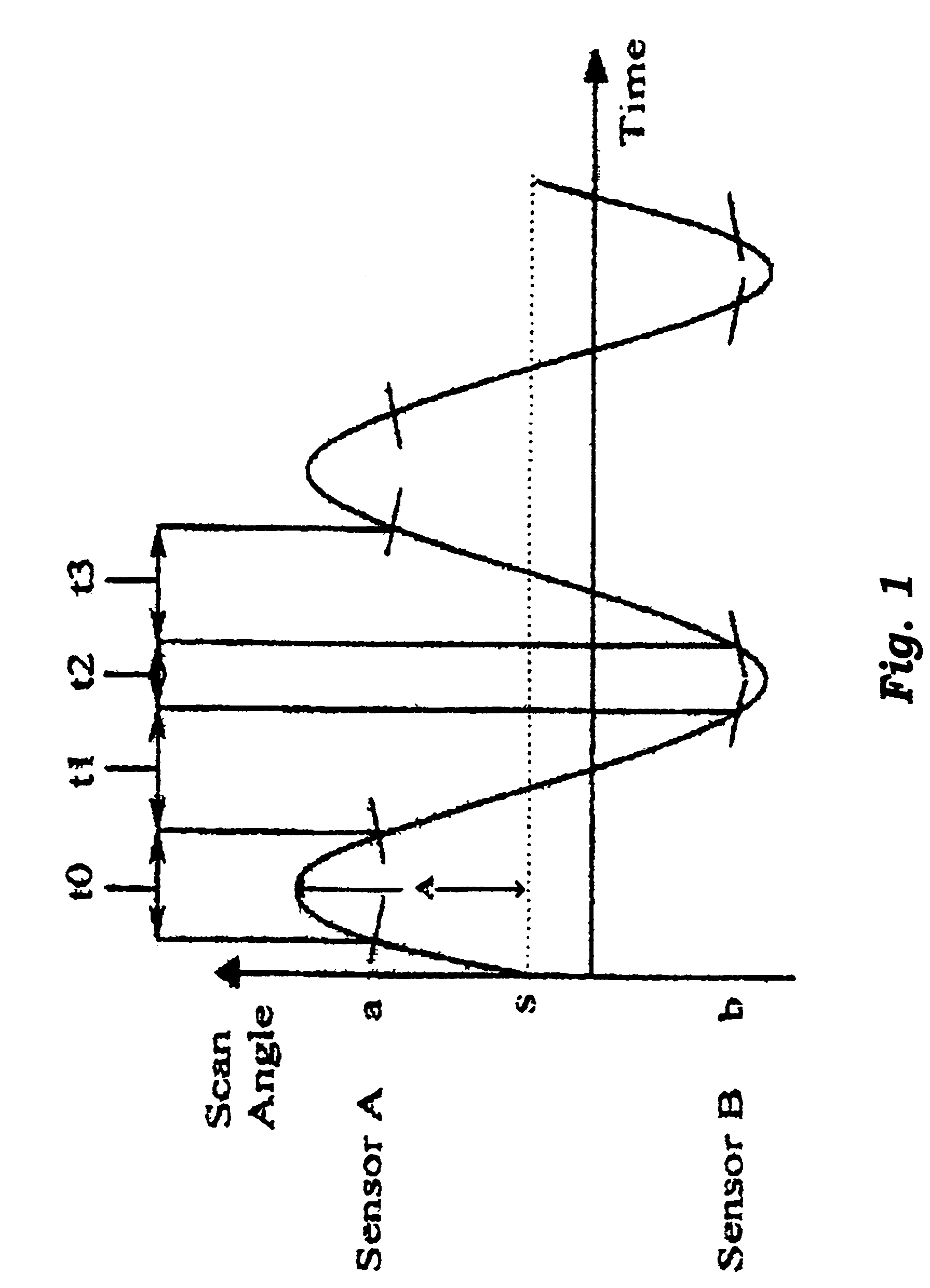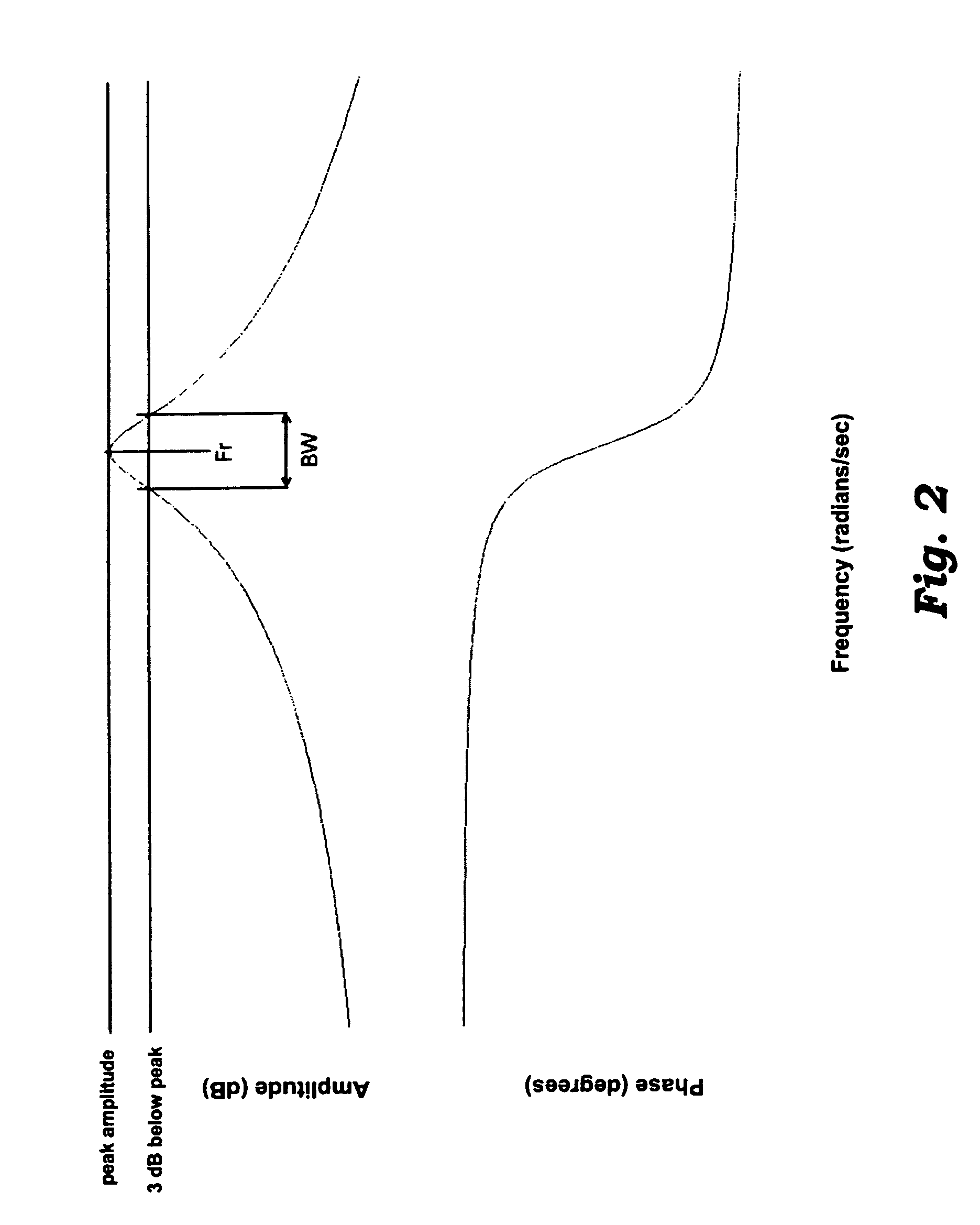Method and apparatus for reducing Q factor in an oscillating laser scanner
a laser scanner and q factor technology, applied in the field of optical systems, can solve the problems that the scan amplitude becomes difficult to maintain at a constant level, and achieve the effects of decreasing the mass of the mirror, reducing the stiffness of the elastic member, and reducing the rotational inertia
- Summary
- Abstract
- Description
- Claims
- Application Information
AI Technical Summary
Benefits of technology
Problems solved by technology
Method used
Image
Examples
Embodiment Construction
[0016]Prior patent applications assigned to the assignee of the present invention have described the construction and operation of the torsion oscillator, including the placement of coil(s) and magnet(s) that together create rotational movement when electrical drive power is applied to the coil. These prior applications include U.S. patent application Ser. Nos. 10 / 093,754, filed Mar. 8, 2002, (published as No. US 2003-0169055 A1 on Sep. 11, 2003); Ser. No. 10 / 329,084, filed Oct. 23, 2002, (published as No. US 2004-0119813 A1 on Jun. 24, 2004); and Ser. No. 10 / 689,175, filed Oct. 20, 2003, (published as No. US 2004-0125198 A1 on Jul. 1, 2004), the entire contents of which are hereby expressly incorporated by reference.
[0017]Generally, the motion of a torsion oscillator is controlled by characteristics of the electrical drive power supplied to it. The typical output scan angle versus time of laser light reflected from the mirrored surface of a torsion oscillator is depicted in FIG. 1....
PUM
 Login to View More
Login to View More Abstract
Description
Claims
Application Information
 Login to View More
Login to View More - R&D
- Intellectual Property
- Life Sciences
- Materials
- Tech Scout
- Unparalleled Data Quality
- Higher Quality Content
- 60% Fewer Hallucinations
Browse by: Latest US Patents, China's latest patents, Technical Efficacy Thesaurus, Application Domain, Technology Topic, Popular Technical Reports.
© 2025 PatSnap. All rights reserved.Legal|Privacy policy|Modern Slavery Act Transparency Statement|Sitemap|About US| Contact US: help@patsnap.com



